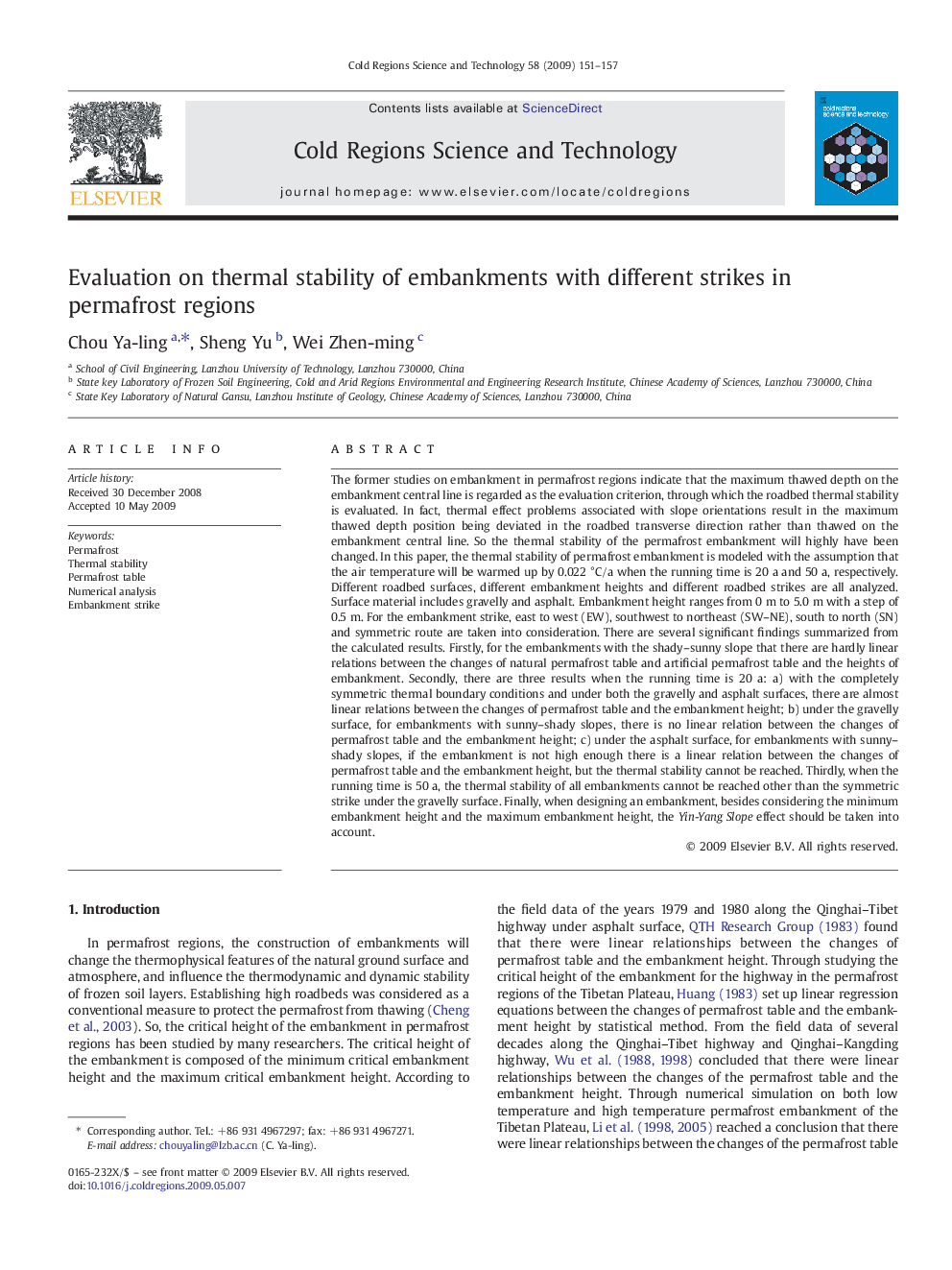| Article ID | Journal | Published Year | Pages | File Type |
|---|---|---|---|---|
| 4676455 | Cold Regions Science and Technology | 2009 | 7 Pages |
Abstract
The former studies on embankment in permafrost regions indicate that the maximum thawed depth on the embankment central line is regarded as the evaluation criterion, through which the roadbed thermal stability is evaluated. In fact, thermal effect problems associated with slope orientations result in the maximum thawed depth position being deviated in the roadbed transverse direction rather than thawed on the embankment central line. So the thermal stability of the permafrost embankment will highly have been changed. In this paper, the thermal stability of permafrost embankment is modeled with the assumption that the air temperature will be warmed up by 0.022 °C/a when the running time is 20 a and 50 a, respectively. Different roadbed surfaces, different embankment heights and different roadbed strikes are all analyzed. Surface material includes gravelly and asphalt. Embankment height ranges from 0 m to 5.0 m with a step of 0.5 m. For the embankment strike, east to west (EW), southwest to northeast (SW-NE), south to north (SN) and symmetric route are taken into consideration. There are several significant findings summarized from the calculated results. Firstly, for the embankments with the shady-sunny slope that there are hardly linear relations between the changes of natural permafrost table and artificial permafrost table and the heights of embankment. Secondly, there are three results when the running time is 20 a: a) with the completely symmetric thermal boundary conditions and under both the gravelly and asphalt surfaces, there are almost linear relations between the changes of permafrost table and the embankment height; b) under the gravelly surface, for embankments with sunny-shady slopes, there is no linear relation between the changes of permafrost table and the embankment height; c) under the asphalt surface, for embankments with sunny-shady slopes, if the embankment is not high enough there is a linear relation between the changes of permafrost table and the embankment height, but the thermal stability cannot be reached. Thirdly, when the running time is 50 a, the thermal stability of all embankments cannot be reached other than the symmetric strike under the gravelly surface. Finally, when designing an embankment, besides considering the minimum embankment height and the maximum embankment height, the Yin-Yang Slope effect should be taken into account.
Related Topics
Physical Sciences and Engineering
Earth and Planetary Sciences
Earth and Planetary Sciences (General)
Authors
Chou Ya-ling, Sheng Yu, Wei Zhen-ming,
